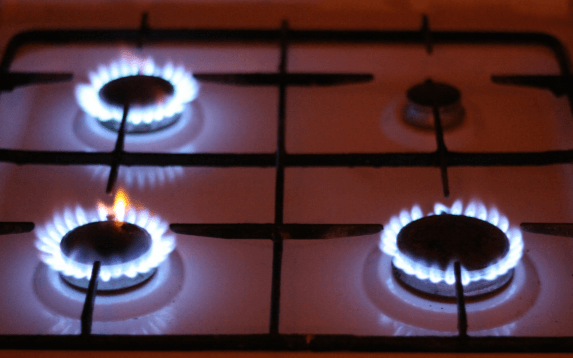Understanding Gas Supply in Australia: A Complete Guide

Australia’s energy needs are diverse, with gas crucial in supporting households, businesses, and industries. It is widely used nationwide for heating, cooking, and powering industrial operations. The versatility and efficiency of fuel make it an important energy source for domestic and commercial purposes. Additionally, Australia’s role as a significant exporter of liquefied natural gas contributes significantly to the global energy market.
The gas supply system in Australia operates through a well-established network that ensures reliable service. Gas in Australia is delivered through pipelines, guaranteeing access for homes and businesses nationwide. This efficient system involves multiple stages, including extraction, processing, and distribution. Consumers benefit from the stability and convenience provided by this extensive infrastructure.
The Importance of Gas in Australia
Australia’s fuel network supports various sectors, from residential cooking and heating to large-scale industrial applications. It is valued for its efficiency, reliability, and lower environmental impact than other fossil fuels like coal. Many homes rely on fuel for heating, cooking, and hot water systems, while industries use it for manufacturing and electricity generation.
In addition to being a crucial domestic energy source, Australia is also a major exporter of natural gas, particularly liquefied natural gas (LNG). This contributes to the country’s economy, with significant revenue generated through exports to international markets.
The Structure of Australia’s Gas Supply Network
It involves several stages, from extraction to distribution. The network can be divided into three key components: upstream, midstream, and downstream.
- Upstream – Extraction and Production: Natural gas is extracted from underground reservoirs. The country has several gas-producing regions, including the offshore fields in Western Australia and the coal seam fields in Queensland and New South Wales. Extraction involves drilling wells and capturing gas, which is then processed to remove impurities.
- Midstream – Transmission and Storage: Once the fuel is processed, it is transported via high-pressure pipelines across vast distances. Australia has an extensive pipeline infrastructure that moves fuel from production sites to major population centres and industries. Additionally, some are stored in extensive underground facilities to ensure supply stability during periods of high demand.
- Downstream – Distribution and Retail: After being transported, the fuel is delivered to homes, businesses, and industrial users through local distribution networks. Retailers manage the billing and customer service aspects, connecting consumers and suppliers. The distribution networks are highly regulated to ensure safe and reliable delivery.
Types of Gas Available
In Australia, two primary types of gas are available to consumers: natural gas and LPG. Each has different properties and is used for specific applications.
- Natural Gas: It is the most commonly used Gas in Australia, mainly for household and industrial applications. It is delivered via pipelines to homes and businesses.
- LPG: It is often used in rural and remote areas without access to natural pipelines and is delivered in cylinders. LPG is used for heating and cooking and as a fuel for certain vehicles. It is also used by industries where pipeline access is limited.
Benefits of Gas in Homes and Businesses
It is a popular energy source due to several advantages that make it suitable for both residential and commercial use:
- Efficiency: Appliances, such as heaters and stoves, provide instant and reliable energy, ensuring convenience and reducing waiting times.
- Cost-Effective: In many regions, it is more affordable than electricity for heating and cooking, offering savings to households and businesses.
- Environmentally Friendly: Compared to coal or oil, natural gas produces fewer greenhouse emissions, making it a more sustainable choice for the future.
- Reliable Supply: The extensive network and storage system ensures a stable and consistent supply, even during peak demand.
Read also Understanding NDIS Providers in Sydney: A Comprehensive Guide
Considerations for Gas Consumers
Safety and efficiency are paramount when using fuel. Consumers should be aware of key aspects to ensure they are using fuel responsibly and cost-effectively.
- Appliance Maintenance: Regular servicing of appliances ensures they function efficiently and safely. Poorly maintained appliances can lead to fuel leaks or inefficient energy use, increasing costs.
- Safety Measures: Installing carbon monoxide detectors with home heaters is essential to avoid harmful emissions. Additionally, ensuring proper ventilation in areas where appliances are used reduces the risk of accidents.
- Energy Efficiency: Upgrading to modern, energy-efficient appliances can significantly reduce energy consumption, helping consumers lower their bills and reduce their carbon footprint.
- Billing and Tariffs: Prices can vary depending on the region, supplier, and usage. It’s essential to regularly review billing details and explore available tariff options to find the most cost-effective plan.
The gas supply network in Australia is vital to meeting the country’s energy demands. It provides an efficient, cost-effective, and reliable energy source for residential and industrial applications. As technology advances and cleaner alternatives like hydrogen become more prominent, consumers can take advantage of these benefits by staying informed about their options, maintaining safety standards, and exploring future developments in the energy sector.





